#manaia's art!!
Explore tagged Tumblr posts
Text

idk
#dandys world#dandys world fanart#art#dw#dandys world astro#dandys world razzle and dazzle#dw astro#dw razzle and dazzle#manaia's art!!
136 notes
·
View notes
Text
Original New Zealand Pokemon
Another post of Fakemon for my original Goorda region based on a combination of Australia and Aotearoa/New Zealand. I've given Australia much more focus so far, so I'm balancing things out by making more kiwi Pokemon. But not an actual kiwi Pokemon. I already did that one.

Tinamu, the Green Stone Pokémon, rock-type. These shy Pokomon live deep underground and are tended to by their parents. Their bodies are made of a rare and valuable green stone and they make their burrows near deposits of this stone. Miners looking to harvest this stone traditionally leave food for the Tinamu as a form of trade.

Tinamu evolves to Pouina, the Green Stone Pokemon, rock/ghost type. When a Pouina wraps its tail around its neck, it gains the power to see into the spirit world. The icon of a Pouina wrapped around itself is used as a symbol of harmony and connection to one's ancestors.

Pouina evolves to Mananamu, the Green Stone Pokemon, rock/ghost type. When a Mananamu ties its tail into a knot, it gains the power to walk between this world and the world of spirits. Legends say that in the past, war almost broke out between the living and the dead until a hero with a Mananamu calmed the ghosts. Since then, Mananamu have been used by psychics and shamans as messengers between worlds.
The Tinamu line are based on pounamu, several types of green stone found in Aotearoa that is culturally important to the Maori and is frequently seen carved into multiple symbols. I tried to work the carvings into the designs. They are also based on the Manaia, a legendary creature often depicted in pounamu carvings (I specifically took inspiration from this carving). The Manaia is a messenger between the human world and the spirit world and its symbol is used to ward off evil. It is often depicted with the head of a bird and the tail of a fish and is often depicted curled into a figure 8, which is where I got the idea of the Pokemon wrapping their tails around themselves. I also based Mananamu on a hadrosaur, specifically a Parasaurolophus, mostly because I thought it would be cool. Their names come form "tiny", "pounamu", and "Manaia"

Sprink: the Bungee Pokemon, normal-type. Sprink have long, prehensile tails that can extend to great lengths, then retract. They wrap their tails around tree branches and wit for bug Pokemon to pass beneath. Then, they jump, catch the bug, and their tails retract to pull Sprink back up with its prey. The sport of bungee jumping was inspired by Sprink.
Sprink is based on skinks, many species of which are native to Aotearoa, and bungee jumping, which (in its modern form) was invented in NZ. The markings on Sprink's body are based on safety harnesses. TBH, I may go back to the drawing board on this one. I feel like it's missing something. Its name comes from "skink" and "spring"

Pāunomacre, the Abalone Pokemon, psychic-type. These strange Pokemon levitate through the air with their psychic powers and habitually collect and examine objects with their tentacles and eyes. The iridescent colors on their shells constantly shift and can mesmerize those who look for too long. Jewellery and carvings made Pāunomacre shells are highly valuable due to their shifting colors and high quality.
Pāunomacre is based on abalone, large sea snails known for the layer of iridescent nacre (mother of pearl) that line the inside of their shells. The shells are often used to make jewelry and decoration. For Pāunomacre, I added an extra shell on the bottom, put the nacre on the outside, and made it into a flying saucer. he tentacles are inspired by sensory tentacles on abalone while the ring of blue eyes around the body comes from scallops. The name comes from "pāua" (the Maori word for abalone), "anomaly", and "nacre".

Korm, the Root Pokemon, ground/grass type. These worm-like Pokemon are actually burrowing plants. When they feel safe, Korm expose their rear ends to the air and unfurl the fronds growing from them to absorb sunlight. Korm have soft bodies that leave them vulnerable to predators. As a result, they are very shy and will burrow away at the first sign of danger. Dirt that Korm burrows through is left enriched in nutrients and supports plant growth.

Korm evolves to Woodworm, the Root Pokemon, grass/ground type. It has developed a powerful yet flexible armored tube of wood around its body that supports larger fronds that can reach higher into the air. When threatened, Woodworm retracts its soft body into its wooden tube. If a small forest appears out of nowhere, It is likely a colony of Woodworm that have decided to stop and photosynthesize for a while.
Korm and Woodworm are based on a number of influences. First, they are earthworms and Aotearoa and Australia have some remarkable large earthworm species. Earthworms help recycle nutrients into the soil, which is why Korm leaves enriched soil where it grows. Second, they are based on ferns and fern trees. The Koru is a spiral symbol that represents an unfurling silver fern frond, which I tried to recreate in Korm's design. The tube that Woodworm has is based on tube worms, aquatic relatives of earthworms that build tubes they can retract into for protection. Korm's name comes from "Koru" and "worm" while Woodworm's name is a pun on "wormwood".

Cololite, the Stromatolite Pokemon, rock-type. Cololite are so strange it took scientists decades before they deciphered its biology. Cololite is a colony of microbes that work together to grow a hollow structure of living rock. Smaller stones bud off of the central body and can be levitated and manipulated through unknown means. By the tine the central stone splits off of the rock it grows from, it is ready to evolve.

Cololite evolves to Concraki, the Stone Colony Pokemon, rock-type. Concraky is a group of spherical, hollow boulders built and controlled by a hive mind of microscopic organisms. The boulders levitate and can be arranged into any configuration, though they are always directed by the largest boulder. As the boulders grow, they crack open and eventually shatter. The fragments of shattered boulder are believed to act as seeds from which new Cololite grow.
Cololite and Concraki are based on stromatolites, stone structures built by generations of photosynthetic bacteria and archaea. As the bacterial colonies grow, they lay down layers of sediment that results in an iconic layered appearance that is represented in the base of Cololite. Most stromatolites are only known from sollils, but there are living ones living in places around the world, including Australia. Concraki is also based on the Moeraki boulders or Kaihinaki, a series of spherical, hollow concretions found on Koekohe Beach. I wanted to make something very bizarre with these, making a Pokemon that doesn't even look like a Pokemon. Their names come from "colony", "stromatolite", "concretion", and "Moeraki".
Previous posts in this series: new evolutions, misc 4, misc 3, single stages, non-natives, regional standards, creepy lines, regional variants, birds, early game standards, misc 2, misc 1, Johto starter variants, starters,
#fakemon#pokemon#new zealand#aotearoa#australia#pounamu#manaia#skink#bungee jumping#abalone#paua#ufo#earth worm#worm#fern#koru#tree fern#stromatolite#concretion#moeraki boulders#kaihinaki#maori mythology#art#digital art#new artist#drawing
27 notes
·
View notes
Text








Halloween art challenge thing I made up for the syoc I write. I had so much fun!! Ocs and themes and credits are listed below:
Georgia/ie as a (rodeo) clown
Ivy in her monster form as a pirate, feat. her brother Luke (doesn't compete in TD Garden)
Zuleika as Batman
Jennifer as Marceline the Vampire Queen
And Marina as a SEA-ne kid and Stella as a superhero themed after herself lol. These six characters owned by @faemorningstar
Nikki as an alien alien.
Lana as a demon in her au monster form where she's a rabbit person don't ask.
Rosie as Slenderman. These three are by my sweet @sapphicwizzro 🧡
Manaia as Robin by @tuatara-time
And Rei as a werewolf by @explosivoo
#total drama ocs#garden#garden art#georgia/ie#ivy#nikki#lana#zuleika#manaia#jennifer#rosie#rei#janeway#marina#stella#other's ocs#trick or garden#i meant to at some point put the theme list on tumblr so other people could put their own casts in#alas i never got around to it. ^^“ maybe next year?
10 notes
·
View notes
Text


the gentle paragon
#my art#transplanar rpg#manaia wairua#dnd#dnd art#digital art#FIXED IT she was way too light#the best girl
20 notes
·
View notes
Photo
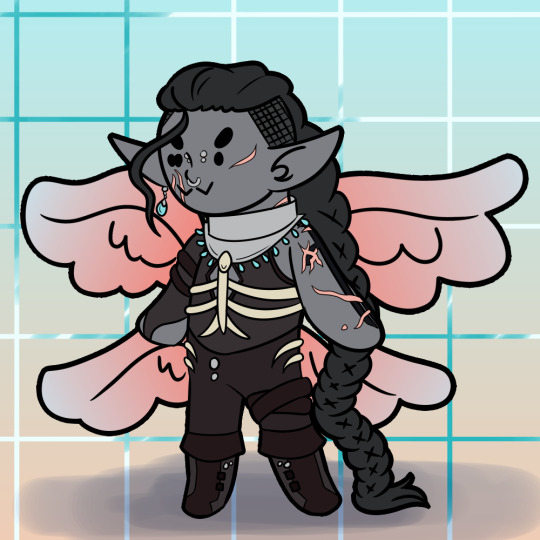
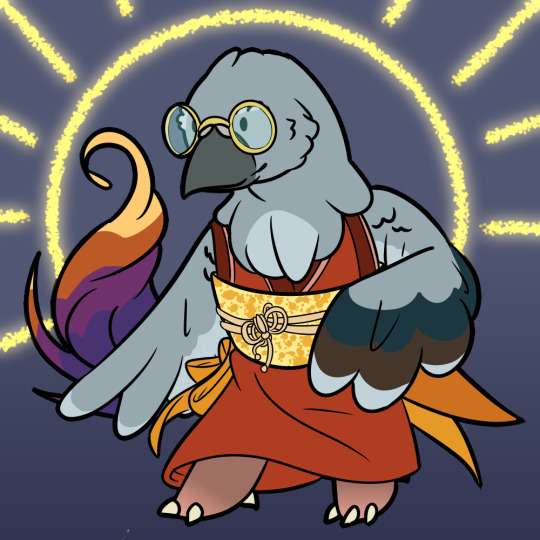
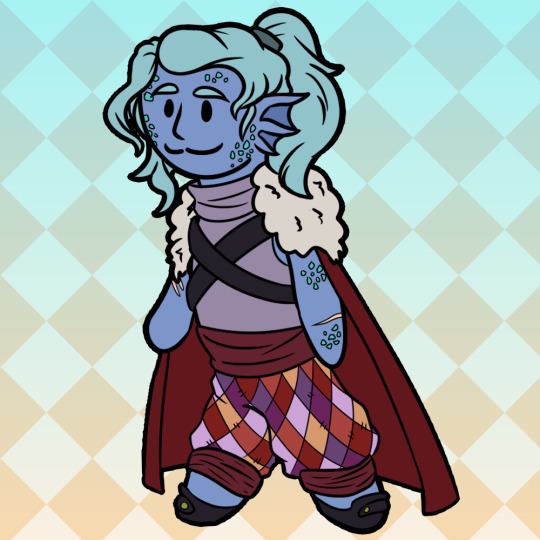
I realized I never actually posted these chibis I did when I was in a bit of an artblock. I’ll probably finish out the party as I work on my catch-up (currently on ep3 of the arc4 SYOS series). I, really love how the colors on Dewey turned out.
#my post#my art#transplanar#transplanarrpg#oka hye#dewey quirk#gentle transplanar#transplanar rpg#transplanar rpg fanart#i was working on citlalli the last time i was doing this#part of my problem w doing these is that i was having trouble finding refs#i might do a bonus Manaia bc she's handsdown the fave
9 notes
·
View notes
Text

Navigator Manaia from house Typhon
Commission art
359 notes
·
View notes
Text










Gift art for other Anathema arpg players of their characters. Draw the character aboves/scribbleswaps and artfight attacks.
https://toyhou.se/13625310.raban/13625323.anathema who belongs to @friendofbones
https://toyhou.se/2991507.manaia/14622648.anathema
https://toyhou.se/12118869.dan/26804562.anathema who belongs to @doxiedreg
https://toyhou.se/19689173.aristedes/19689183.anathema who belongs to @hymyarts
https://toyhou.se/10256639.ioeth/10308724.anathema who belongs to @apeldille
https://toyhou.se/17943091.brynn/23874416.anathema
https://toyhou.se/12686224.n-agathias/12686228.anathema who belongs also to @apeldille
https://toyhou.se/23973588.aquilo/24049429.anathema who belongs to @taeti
https://toyhou.se/6250388.ramman/21101948.anathema
https://toyhou.se/2922332.jezabelle/9432515.anathema
I don't know any other Tumblr accounts for all y'all so feel free to tell me if you own of these characters listed and I'll tag you.
#my cool stuff#digital art#fantasy#anathema#arpg#anathema arpg#creatures#fantasy creature#ungulates#wings#meme#trade offer#portraits#not my characters#snake#viper#wyvern#deer#horse#cervine#equine#donkey#unicorn#bovine#antelope
5 notes
·
View notes
Text
Unique Pottery Stamps in NZ: Craft Your Signature Style with Local Designs
Pottery stamps NZ are an essential tool for ceramic artists in New Zealand, offering a unique way to add personal touches and intricate designs to clay creations. These stamps, often handcrafted, allow potters to imprint patterns, symbols, or logos onto their work, enhancing the texture and aesthetic appeal of each piece.
In New Zealand, the tradition of pottery is deeply rooted, with influences from Māori culture and contemporary design blending to create a distinctive style. Pottery stamps play a crucial role in this creative process, providing artists with the means to incorporate both traditional motifs and modern designs into their work. Whether used for marking ownership, branding, or simply adding decorative elements, these stamps contribute significantly to the final appearance of a ceramic piece.
The process of using Rubber stamps NZ involves pressing the stamp into soft clay before it is fired. The design is then permanently etched into the surface, creating a lasting impression. Potters can choose from a wide variety of stamps, including those made from wood, rubber, or metal, each offering different textures and effects. Custom stamps are also popular, allowing artists to create bespoke designs that reflect their unique style or brand.
For those looking to incorporate cultural elements, Māori designs are a popular choice. Custom gifts often feature koru (spirals), manaia (mythical creatures), and other symbols that hold significant meaning in Māori culture. Using these designs in pottery connects the work to New Zealand’s heritage and adds depth to the piece’s story.
In addition to traditional designs, contemporary potters in New Zealand are experimenting with abstract and geometric patterns, blending global trends with local craftsmanship. The result is a vibrant pottery scene where each piece tells a story, enhanced by the thoughtful use of pottery stamps.
Whether for functional wares or decorative art, Pottery stamps NZ offer endless possibilities for creativity in New Zealand’s thriving ceramics community.
0 notes
Text
boot 2024: Spannung pur bei der Verleihung des Dive Awards mit Hauptsponsor Curaçao

Am Freitag, 26. Januar, wurde der 2. Dive Award der boot Düsseldorf mit großer Beteiligung der Tauchcommunity in den Kategorien INNOVATION, CLIMATE, DESTINATION, PRODUCT und PERSONALITY in der Halle 12 verliehen. Mit Spannung wurde die Auszeichnung der Gewinner erwartet, denn in jeder Kategorie waren hochkarätige Ideengeber der Tauchszene am Start. Hauptsponsor des Preises ist das Tauchparadies Curaçao. Durch den Abend führte das bewährte Moderatorenteam Anna von Boetticher und Jan Schulte. Mit den Stimmen der Jury, bestehend aus den Chefredakteurinnen und -redakteuren Alexander Kassler (TAUCHEN), Dr. Friedrich Naglschmid (Divemaster), Nina Zschiesche (wetnotes), Armin Süß und Herbert Gfrörer (taucher.net) und Dietmar Fuchs (VDSTsporttaucher) sowie den Tauchfans im Public Voting wurden folgende zukunftsweisende Ideen und Entwicklungen ausgewählt: INNOVATION: die patentierte Divevolk Unterwasser-Touchscreenmembran ermöglicht den Zugriff auf mobile intelligente Endgeräte. Für Sporttaucher kann das Smartphone zur Aufnahme von Fotos und Videos, zur Kommunikation, zum Absetzen eines Notrufs oder zur Positionsbestimmung an der Meeresoberfläche verwendet werden. Beim technischen oder wissenschaftlichen Tauchen ermöglicht die Touchscreen-Membran eine nie dagewesene Nutzung aller Apps, so dass die Identifizierung von Unterwasserfischen oder andere wissenschaftliche Arbeiten auch im Wasser durchgeführt werden können. Der Gewinner wird das Preisgeld an eine Meeresschutzorganisation spenden. CLIMATE: Beim Projekt der Deutschen Stiftung Meeresschutz geht es um den Erhalt und die Renaturierung von Seegraswiesen im Mittelmeer: ein Citizen-Science-Projekt, in das Tauchzentren, Forschungsstationen, Touristen und Einheimische eingebunden sind. Bei dem Projekt „Die Meeresgärtner“ geht es um die Schaffung wirkungsvoller mariner CO2-Senken sowie den Erhalt und die Wiederherstellung der Biodiversität im Mittelmeer. Project Manaia schult Tauchschulen darin, Seegräser der Art Posidonia oceanica anzupflanzen und zeigt, wie Samen und ausgerissene Pflanzen wiedereingesetzt werden können. Die so geschulten Tauchzentren bilden das Meeresgärtner-Netzwerk Citizen Science: Einheimische und Touristen können bei den Meeresgärtner-Stationen Seegrasfunde zur späteren Renaturierung abgeben. Die Stiftung wird das Preisgeld in ein WetLab (Aquarium, eDNA-Analysen) nebst Kühlfach zur Lagerung von Seegrassamen und Seegraspflanzen an Bord des Expeditionsschiffes SY Waya Waya investieren. DESTINATION: Das Bergwerk Nuttlar ist seit 1986 auf einer Strecke von 12 km geflutet. Die gesamte Hardware aus Bergwerkzeiten (unter anderem Loren und Hämmer) ist noch vorhanden. Das Bergwerk ist für alle Taucher geeignet. Als einzige Location in Europa haben Sporttaucher die Möglichkeit, im Anfangsbereich zu tauchen und zu erkunden, ob eine weitere Ausbildung in diesem Bereich für sie in Frage kommt. Es gibt keine offizielle Location in Europa, die Sporttauchern ein solches Erlebnis bietet. Technische Taucher können Guidances entlang der Cave 1 Strecke buchen. Cave/Mine Diver können autonom tauchen. Aufgrund der geringen Tiefe ist das Bergwerk besonders für die Ausbildung geeignet. Taucher kommen mittlerweile aus der ganzen Welt! Ihr Preisgeld werden sie nutzen, um das Projekt Bergwerktauchen Nuttlar weiter auszubauen und es für Taucher noch attraktiver zu machen. PRODUCT: ENOS ist ein weltweit einmaliges System, das Taucher direkt und schnell rettet, ohne lange suchen zu müssen. Seit dem Launch 2004 auf der boot Düsseldorf hat das System alle Taucher binnen weniger Minuten gerettet. Es ist immer noch einmalig, kein anderes System ist autark: Ohne Funkzeugnis, aufwändige Rettungskette und Gebühren und ohne weitere Technik. Es kann sogar auf Schlauchbooten eingesetzt werden. ENOS besteht aus dem Empfänger an Bord und Sendern, die die Taucher mitnehmen. Dieser wird im Notfall an der Wasseroberfläche eingeschaltet. Er sendet einen ersten Alarm und die GPS-Position der Taucher direkt an das Boot. Aus den eigenen GPS-Daten und denen der Taucher ermittelt der Empfänger nun Richtung und Entfernung zum Taucher, was er in einer deutlichen Grafik anzeigt. Der Schlüssel für die gezielte und schnelle ENOS-Rettung! Das Preisgeld geht an das Baltic Sea Nature and Heritage Project (www.bsnhpa.org). PERSONALITY: Vom tiefblauen Ozean bis zur Plastikverschmutzung: Dr. Christine Figgener ist eine der engagiertesten Meeresbiologinnen, die sich leidenschaftlich für den Schutz von Meeresschildkröten einsetzt. Ihr Durchbruch kam 2015, als ein Video von ihr, in dem sie einen Plastikstrohhalm aus der Nase einer Schildkröte entfernte, viral ging. Mit diesem Momentum nutzt sie die Anziehungskraft dieser charismatischen Tiere, um weltweit auf den Zustand der Meere aufmerksam zu machen. Als Autorin, Wissenschaftskommunikatorin und Leiterin einer NGO in Costa Rica verbindet sie Forschung mit Herzensangelegenheiten. Mit Vorträgen von Schulen bis zu Universitäten inspiriert sie Menschen, sich in Meeresschildkröten zu verlieben und sie in ihrer Schutzmission zu unterstützen. Das Preisgeld steckt sie in ein Citizen Science Projekt, das die Liebe zu den Meeresschildkröten stärken soll: eine Online-Foto-ID-Datenbank für Meeresschildkröten, die bei Tauchgängen angetroffen werden. boot Director Petros Michelidakis dankte Jury und Fans im Public Voting für die gute Auswahl der Preisträger: „Unsere Gewinner sind ein Spiegelbild der innovativen Tauchszene. Hier steht die Welt nicht still, sondern ist ständig in Bewegung, um den Meeresschutz weiter zu befeuern. Tauchsportlern ist eine intakte Umwelt immens wichtig und der Schutz aller Gewässer ist quasi ihre DNA. Ich freue mich sehr, dass wir diese zukunftsorientierte Community in den Hallen 11, 12 und 13 an Bord der boot haben.“ Bildzeile: Gruppenbild mit den Gewinnern des Dive Awards der boot 2024: (v.l.n.r.: Team Bergwerktauchen Nuttlar (Kategorie DESTINATION) mit Laudator Alexander Kassler, Enos System (Kategorie PRODUCT) mit Laudator Armin Süß, Deutsche Stiftung Meeresschutz (Kategorie CLIMATE) Laudator Herbert Gfrörer, Dr. Christine Figgener (Kategorie PERSONALITY), Divevolk (Kategorie INNOVATION) mit Laudatorin Nina Zschiesche, Petros Michelidakis, Director boot Düsseldorf. Foto: Messe Düsseldorf Read the full article
0 notes
Text
SDL: Pohewa Pāhewa: a Māori design kaupapa
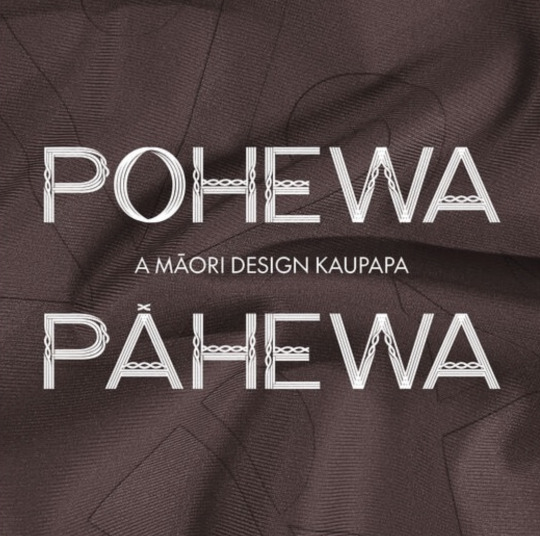
Desna Whaanga-Schollum

MĀTAURANGA MĀORI / SCIENCE COMMUNICATION / INDIGENOUS DESIGN & ART
The way Desna's work approaches and discusses national identity ties it together. She works on projects with people from many different communities, business and design professionals, artists, and academics to get results that improve people, practises, and places. Desna is involved in Mori identity design, discourse, and stakeholder involvement in Aotearoa through design consulting, study, exhibitions, wnanga, speaking engagements, and governance roles.
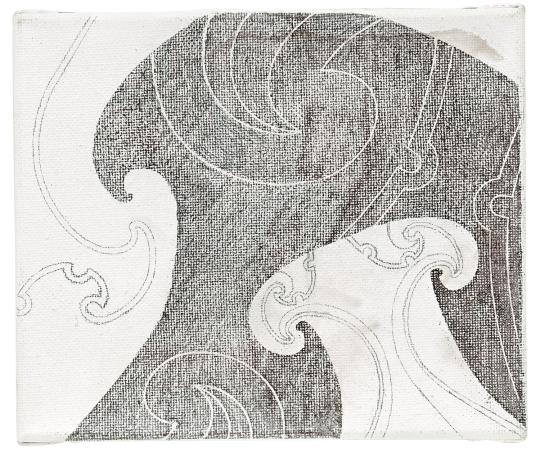
Tyrone Ohia

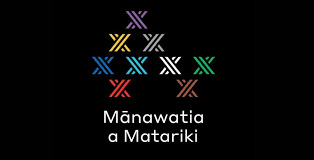
Tyrone Ohia is a designer working out of Tmaki Makaurau. He is of the Ngti Pkenga and Ngi Te Rangi iwi. He grew up in Whanganui but was born in Tauranga, and now he runs the award-winning design business Extended Whnau out of Tmaki Makaurau. The studio is motivated by the desire to elevate and promote all parts of Te Ao Mori through design and, as such, works on a wide variety of projects with a wide variety of collaborators.
Graham Tipene

“I grew up in Auckland at a time when the only place to see Māori representation in art was in the museum or the statue in downtown,” he says, referring to Molly Macalister’s 1967 bronze sculpture A Māori Figure in a Kaitaka Cloak. "I thought it wasn’t good enough and we needed to do better for our kids who don’t see themselves in their environment.”
Graham Tipene's art can be seen all over Tmaki Makaurau, from the impressive concrete panels in the Waterview Tunnel and the beautiful Tirohanga Whnui walking and cycle bridge in Albany to the Central City Library and the Te Ao Mrama (South Atrium) at the Auckland War Memorial Museum Tmaki Paenga Hira.
The carving behind him shows Kane Nepu Paora, the grandmother, and Mere Paea Tipene, the granddaughter, coming together in a hongi. This shows the tuakana-teina bond between the two women.
Below them are two manaia who live in the water on either side of the Tmaki Isthmus. Their names are Kaiwhare and Horotiu. They show an old, intangible link between each river and the value of the two waterways for getting from east to west. They are guardians, or kaitiaki, who keep us safe and help us understand their job through stories.
Johnson Witehira
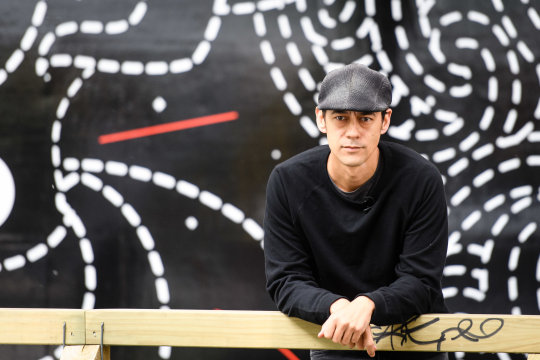
Johnson Witehira is of Tamahaki and Ngi T-te-auru origin. He is an artist, a designer, and a professor. He helped start both Waahi Wairua and Indigenous Design and Innovation Aotearoa (IDIA).
Since he got his PhD in Mori Visual Art in 2013, Johnson has been on a journey to bring Mori culture into every part of life in New Zealand. He was responsible for developing Mori designs for the Auckland City Council, TVNZ, the Auckland International Airport, and Waka Kotahi, the New Zealand Transport Authority. Other essential design projects include making the first set of Mori alphabet blocks, co-designing the PAKU gardening tools for kids, and making the first usable Mori-specific typeface.

Zoe Black
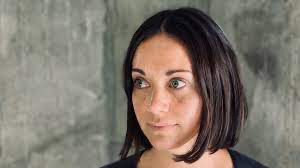
Zoe Black is the deputy head of Objectspace in Auckland, Aotearoa, New Zealand. She is Ngpuhi, Ngti Hine, and Pkeh. Since 2008, she has been working in art spaces. Her organising work has been mostly about building up communities and speaking up for craft and object art forms that don't get enough attention. She is the director in residence at Norwegian Crafts (2020–2022), where she works on projects that bring together the ways that Indigenous people in Aotearoa and Sápmi make things. Zoe Black helped put together the Embodied Knowledge issue of The Vessel, which was the third issue.

0 notes
Text
SYMBOLS USED AND MEANINGS
Connected repeating Koru: represents Whanau and togetherness, indicates growth and embrace which I thought aligned with maternal themes. Therefore I decided to use this in as the first graphic along side mother to represent this .


The above symbol I used in alignment with the word 'people'. This double sided Mangopare symbolises the hammerhead shark, a principle motif in kowhaiwhai (rafter patterns) and moko (tattoo). This design is used throughout Maori art. Symbolising strength, agility and tenacity, it identifies the protective traits essential for warfare.
I used a simple whare or Marae outline shape to represent house and home describes in the speech.

to show the 'Wairua' I used the Manaia symbol which represents a mythological spiritual guardian or minister. As Wairua means of the spirit or soul I felt this was fitting. I animated this in a spiral shape to show the continuity of this notion.
the represent family and whanau I used the double twist or pikorua , this shows the joining together of two or more people and a loyal bond for life.

0 notes
Text
I knew that for whatever reason Manaia wasn’t going to make it to the end of the campaign because like....official banner art didn’t feature her
But I did NOT expect it to just be because her player had to leave the campaign :(
0 notes
Text



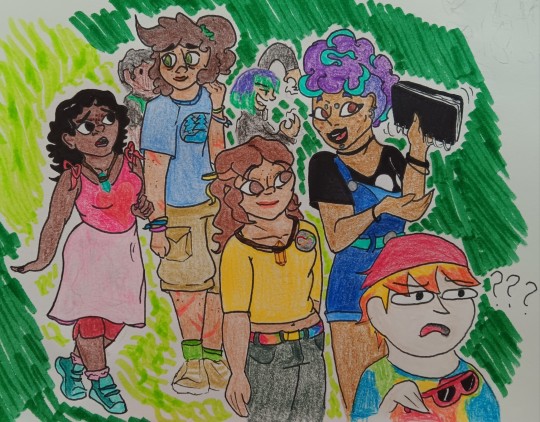

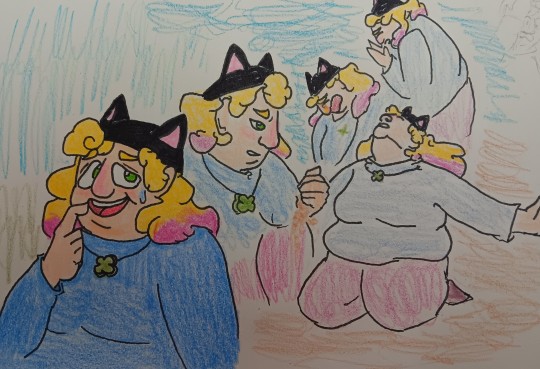


Various chapter 5 art that I have for now.
#garden#garden art#watch me try to keep an art tag#winnifred#wilfred#stella#rosie#marina#manaia#tadao#zuleika#annabelle#cameron#jackson#percy#terrance
17 notes
·
View notes
Text
🎧🐳🎧
#hala no what manaia is leaving )))):#my baby#i already miss her#my girl ))):#kaya pala she's been missing from the recent art#aw gago all the best kay lyra#sobrang napamahal ako kay manaia#like mahal ko silang lahat pero wala may soft spot ako sa kanya#the og big buff lady#ilang beses akong umiyak dahil sayo#ingat sa lahat lyra
0 notes
Text
desperately want to do some irl art trades (for lack of a better term) with indigenous people from other places. like i talk to someone for a bit and then i hand carve a manaia or koropepe or something. and the other person does some beadwork for example. and we ship these to each other so both people got some handmade Real culturally important art with the religious/spiritual protocol behind it + a bit of information about the work and meaning/culture behind it if it's appropriate to share. instead of a bullshit fucking $3 "dream catcher" or "tiki totem" from the dollar store. do you understand my vision. i am speaking directly in your ear now
when i'm no longer homeless i desperately wanna try setting up this one idea i've had for ages but idk... scary...
#indigenous solidarity worldwide <3#i just think it'd be a really nice way to exchange and share culture with other indigenous people. everyone wins#idk if anyone else would be interested in this though -_- so it's just been rattling around in my brain for several years now#i guess take this as me gathering intel to see if people would be interested or not if you wanna weigh in lol
21 notes
·
View notes
Text
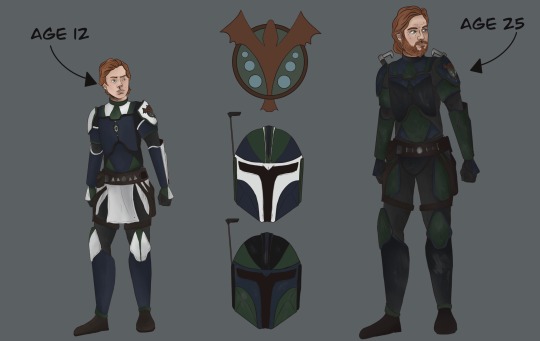
Decided my fav type of au is ‘hey what if this character became a Mandalorian?’
Anyway, the Jedi didn’t make it to Bandomeer in time, and a mix of self lead slave revolt and a Mando attack causes Obi-wan to be free. The mando leading the squadron against the slavers immediately sees Obi-wan and goes ‘oh. New son!’
Obi-wan is a little bitter towards the Jedi Order, both for basically kicking him out, for putting him in the situation of slavery, and for not finding him, and goes with the Mandalorians, bc this way he can help (unlike the farming in the agricorps)
He gets adopted by that mando, and his new family (His mom Hive, his dad Mansoor, and big sister N’ala) are part of a long line of Protecters called Cabur B’kih, a subgroup that works to fight for and train others throughout the Outer Rim. Obi-Wan’s family in particular help with training animals as allies within battles, hence the bird of prey (my version of a galaar) as their clan symbol.
Anyway Obi-wan follows in his family’s footsteps and becomes another Protecter, helping to bring freedom to the galaxy, and his main weapons are beskad.
#Mandalorian#mandalorian obi wan#obi-wan Kenobi#Star Wars#Star Wars au#Mandalorian obi wan Kenobi#also he later let’s go of his bitterness and forgives the Order.#he and his sister both can use the force- Manda Blessed as their parents call it-#and whole mando culture with the force is different than jedi#Obiwan still takes things he liked from the temple and kept them in his life#in my head tho. force sensitive mandos also have a thing with anger. useless anger that is#anger can be helpful. it can guide u. but don’t let it control u. u will get sloppy. you will#you will lose if you do not control your anger#anyway#my art#wow first non Leia post in a while….#Ben Manaia#🪐
111 notes
·
View notes